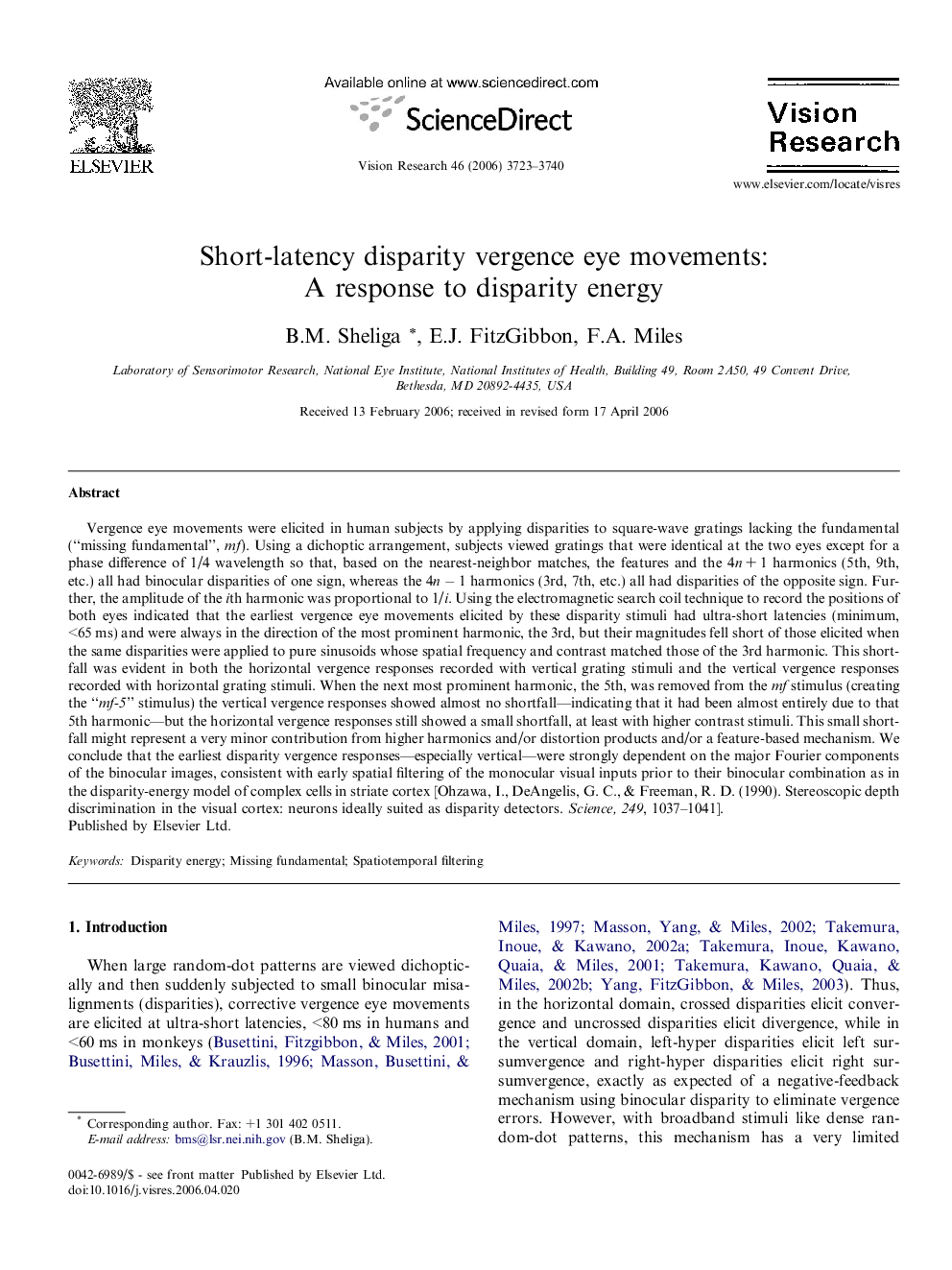| Article ID | Journal | Published Year | Pages | File Type |
|---|---|---|---|---|
| 4036595 | Vision Research | 2006 | 18 Pages |
Vergence eye movements were elicited in human subjects by applying disparities to square-wave gratings lacking the fundamental (“missing fundamental”, mf). Using a dichoptic arrangement, subjects viewed gratings that were identical at the two eyes except for a phase difference of 1/4 wavelength so that, based on the nearest-neighbor matches, the features and the 4n + 1 harmonics (5th, 9th, etc.) all had binocular disparities of one sign, whereas the 4n − 1 harmonics (3rd, 7th, etc.) all had disparities of the opposite sign. Further, the amplitude of the ith harmonic was proportional to 1/i. Using the electromagnetic search coil technique to record the positions of both eyes indicated that the earliest vergence eye movements elicited by these disparity stimuli had ultra-short latencies (minimum, <65 ms) and were always in the direction of the most prominent harmonic, the 3rd, but their magnitudes fell short of those elicited when the same disparities were applied to pure sinusoids whose spatial frequency and contrast matched those of the 3rd harmonic. This shortfall was evident in both the horizontal vergence responses recorded with vertical grating stimuli and the vertical vergence responses recorded with horizontal grating stimuli. When the next most prominent harmonic, the 5th, was removed from the mf stimulus (creating the “mf-5” stimulus) the vertical vergence responses showed almost no shortfall—indicating that it had been almost entirely due to that 5th harmonic—but the horizontal vergence responses still showed a small shortfall, at least with higher contrast stimuli. This small shortfall might represent a very minor contribution from higher harmonics and/or distortion products and/or a feature-based mechanism. We conclude that the earliest disparity vergence responses—especially vertical—were strongly dependent on the major Fourier components of the binocular images, consistent with early spatial filtering of the monocular visual inputs prior to their binocular combination as in the disparity-energy model of complex cells in striate cortex [Ohzawa, I., DeAngelis, G. C., & Freeman, R. D. (1990). Stereoscopic depth discrimination in the visual cortex: neurons ideally suited as disparity detectors. Science, 249, 1037–1041].
